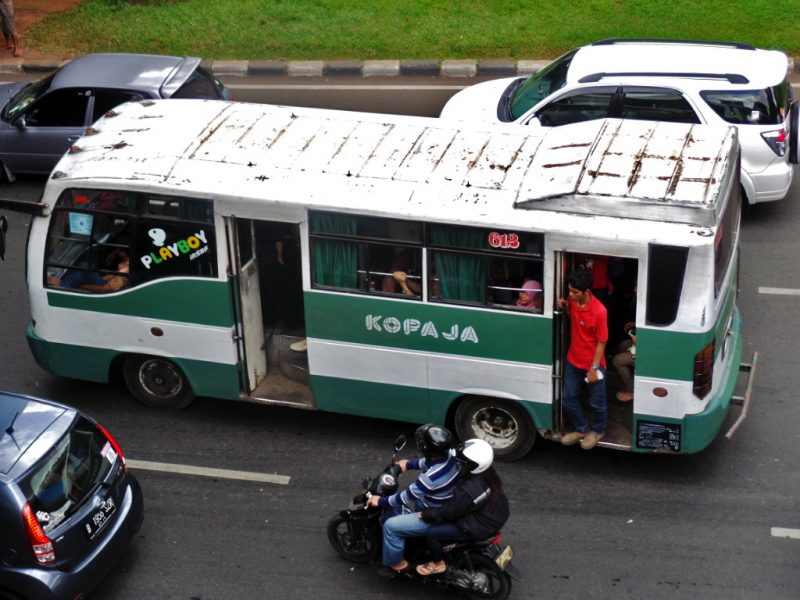Not long ago, I watched Dawn of The Planet of the Apes in 4-D at a Blitzmegaplex cinema complex in Jakarta. Strapped into a seat that moved on pistons in approximate time with the onscreen action for the entire 90 minutes, I was vigorously bucked, swayed, rattled, jolted, tipped.
Water sprayed me whenever rain or splashes occurred in the film. Jets of air actualised the celluloid wind. Flashing lights intensified lightning. Even smoke pumped from under the screen when the ape camp was torched by a pugnacious primate. To be honest, I began wishing the cinema would catch fire about halfway through the movie.
Despite the film being largely forgettable, the ride was a novel one. But it occurred to me that I could have had the same experience at a fraction of the Rp.100,000 ticket price by watching it on my iPad on the back seat of one of the battered and largely windowless Kopaja buses plying the city. Taking a taxi over some pot-holed roads would have afforded the same effect, especially if I had selected the wrong cab.
When I arrived in Jakarta in the 1990s, there were two main taxi companies. Blue Bird was the sensible option, whose largely trustworthy drivers used their meters and pretended to know where they were going. President taxis, with their fearsome red and yellow livery (a fleet of these vehicles called to mind a swarm of stinging insects), were to be flagged down only if you were a hardened fare negotiator and knew precisely how to reach your destination. It helped to be lightly dressed too, for these beat-up old sedans seldom had working air conditioning. I usually got around the city on an ojek, a cheap motorcycle taxi. This was because I was a fledgling English teacher with little money.
I had fallen into a career in English teaching, like many of my colleagues, as a means of supporting myself while travelling through Southeast Asia. Jakarta in those days still had a frontier town feel to it, behind the gleaming high-rises, attracting plenty of misfits and rogues from abroad. And my language school reflected this. The teachers formed a gregarious and eccentric bunch, among them casual alcoholics, drug users, unemployed thespians, manic depressives and a high number of English public school drop-outs. Several managed to tick all of these boxes.
Astoundingly, when I first applied for a job there, I was told that I wouldn’t fit in. It was only after I’d started drinking excessively and hanging out in dives that I was taken on.
It could be a tough job. When I was first required to go beyond general English instruction and teach a TOEFL preparation course, I entered the classroom feeling the dread of a rookie wrestler climbing into the ring to face not one but 16 burly and deadly opponents. In the mid-90s, the Test of English as a Foreign Language – an entrance examination for those intending to study at universities abroad – included a section on sentence structure. This meant I was expected to be able to explain language principles on the equivalent of the molecular level. Or so it seemed to me. I had swotted all week, anticipating all tricky questions, and the lesson was going well until one student pounced and – keeping with my wresting analogy – brutally manhandled me into a stranglehold. He shook me viciously and grimaced. “OK, Sir. Tell me, why is that preposition there and not there?”
 “Erm, that’s a very good question,” I rasped.
“Erm, that’s a very good question,” I rasped.
I became sick toward the end of that day. Taking a taxi home during rush hour would have been unwise, so I took an ojek instead. Before we had gone far I tapped the driver on the shoulder and asked him to pull over. Once stopped, I slid off and chundered loudly in the gutter, buffeted by the traffic roaring past me just inches away. This happened three times.
The driver was sympathetic, each time saying, “Masuk angin, Mister.”
This means ‘air inside’, describing an ailment that is to Indonesians what the common cold is to the British – widespread, perennial, almost iconic; though I’ve never heard masuk angin convincingly explained. It sounds like indigestion. It might be wind.
In a rare instance of cultural indulgence, I once had a case of suspected masuk angin treated at a friend’s house with a traditional procedure called kerokan. This involves a practitioner – anyone standing nearby with some small change in his/her pocket – scraping the edge of a coin repeatedly down your bare back, until long red welts appear. It leaves you looking like you’re transforming into a tiger.
I was hungover that morning. My body wasn’t going to react well to being scratched with a grubby coin. Sure enough, as the process got underway I felt a wave of nausea rising from my stomach. I excused myself and stumbled into the back garden, leaned over a low wall, gave a low growl and retched. My torturer nodded knowingly and gave a satisfied smile. He explained that the vomiting indicated the ‘badness’ escaping from my body. I had been cured. I found an ojek and asked the driver to take me home. Unfortunately, this was one of those days when only a helicopter could beat the traffic.
Motorcycles – easily obtainable through cheap credit and often serving as the sole family vehicle – are a stark madness in Jakarta. I was soon caught up in one of the city’s notorious traffic tangles at a major intersection. These virtual knots of vehicles generally form after a downpour that disables traffic lights, sends traffic police scarpering and can spread for miles. The mass of stationary motorcyclists stretching out all around me resembled an outdoor rock concert crowd; a vast sea of bobbing, jerking crash helmets. It was a surreal sight.
But by far my scariest ride in Indonesia was a recreational one. It happened when I visited the Trans Studio theme park in Bandung. I had been advised to go during the week when there were no queues for the rides. This absence of crowds was pleasant until I clambered onto the rollercoaster and waited for other thrill-seekers to join me. None did. The seats behind and ahead of me remained unsettlingly empty. I was alone. Yes, alone on a rollercoaster – it sounds like a horror story.
There are some places – inside an airliner, on a cruise ship, on a rollercoaster – where it is inconceivable to find oneself alone. Yet there I was. I had nobody else to share the danger with. Fate pointed its finger solely at me. I became aware of how eerie and still the vicinity of the rollercoaster had become.
With none of the expected clanking and juddering, the carts sprang forward and sped toward a massive loop in the track. I couldn’t believe they hadn’t cancelled the ride. This, surely, was the climax of an elaborate attempt on my life. I imagined tomorrow’s newspaper headline: Suspiciously Solitary Rider Flung to Death in Rollercoaster Horror.
I lurched. I shrieked. I lived. But I never went near a theme park again. Cinematic simian simulations and Indonesian public transport provide all the thrills and spills I’ll ever need.




